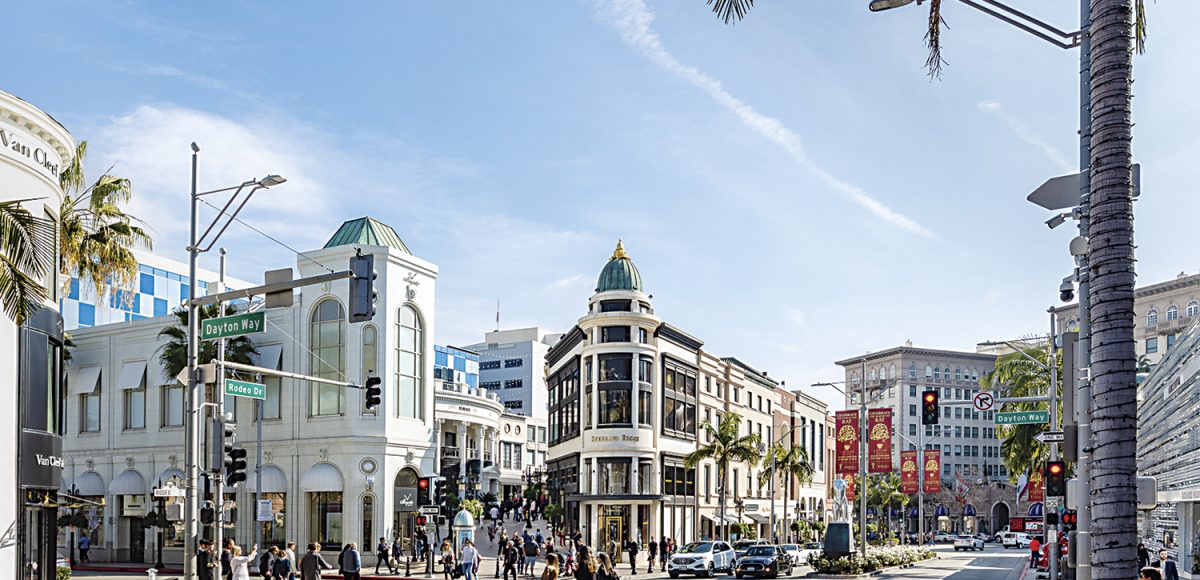The Beverly Hills City Council considered the proposed mixed use ordinance at its Regular Meeting of Oct. 13. The ordinance would create a new overlay zone for developments and buildings that include both residential and commercial space. The proposal comes at a time when the City faces pressure by Sacramento to greatly increase its housing stock.
The City first discussed mixed use in 2010, the last time the City’s General Plan was updated. In 2018, the City Council directed the Planning Commission to study mixed use zoning, with the plans developing in committee meetings and hearings over roughly the next two years.
Planning Commission Chair Peter Ostroff spoke first in support of the ordinance, addressing the comments he has fielded over the years working on the proposal. “Many of these comments have urged that we do nothing, we change nothing, we just keep everything as it is,” he said. “And many of the others urged that we’d be much more aggressive than we have been by adding more areas, authorizing more height, more density, smaller units and reduce parking requirements. What we did was to strike a balance when we recommended the version that is in front of you and we erred, in my view, on the less aggressive side.”
The proposed mixed use overlay zone would fall mainly along major commercial corridors, including Wilshire Boulevard, La Cienega Boulevard, South Santa Monica Boulevard, Robertson Boulevard, Olympic Boulevard, Beverly Drive, South Doheny Drive, and San Vicente Boulevard. The overlay zone would not extend to the Business Triangle.
“The context and objectives as outlined by the Planning Commission for this ordinance were to provide an opportunity for new housing in the City and new housing types, such as smaller units than what we generally see in multifamily,” explained Senior Planner Timothea Tway at the Council Meeting. “This could be helpful for seniors or small families, also addressing the regional housing needs and the city’s housing needs and creating housing where there would not be displacement of existing residents for new units.”
“The number of housing units would be based on the site area of the project, and the height is based on the neighboring properties maximum height,” she said.
The Staff Report submitted in advance of the Oct. 13 meeting cites potential fiscal impacts of the new overlay zone. Those impacts could include the development of “older, underutilized buildings, which could contribute more property taxes.”
Given that commercial rents are usually higher than residential rents, the Report points out that there would be “no financial benefit for a successful commercial building to be replaced with a mixed use building, and the City should not be concerned about losing its high-quality commercial buildings (and associated tenants) to mixed use developments.”
Additionally, commercial areas could benefit from the presence of proximal neighbors, increasing local spending and the City’s tax base. “The increased presence of residents along commercial corridors can result in greater pedestrian activity, which can enhance the street-level atmosphere as residents patronize businesses and create hubs of community activity,” the Staff Report states.
The Report also addresses concerns over increased traffic, a perennial concern in Los Angeles. While mixed use housing would bring higher density to commercial areas, it would also place residents nearer public transportation. Local workers would also have the chance to live closer to their jobs, “which could reduce vehicle miles traveled and the associated negative environmental impacts.”
On the other side of the equation, an increase in population could put a larger strain on municipal services.
The proposal to allow mixed use comes at a crucial time for the City. Current State housing goals require Beverly Hills to plan for more than 3,000 new units in its General Plan covering 2021 to 2029. Though the City is not required to build the units itself, it must ensure that its zoning and regulatory framework enables and encourages that level of development.
The conundrum for Beverly Hills is how to expand housing stock in a City with little to no vacant land without fundamentally altering the character of its neighborhoods. Typically, to build a new house in the City, an old one must be demolished first. Mixed use developments, the Staff Report points out, have the benefit of not displacing existing residents while adding units to the City.
Of the more than 60 public comments that were made during the session, though, many expressed concerns with the possibility of mixed use in Beverly Hills.
“So many of us have been here all our lives have seen enough change, and have come to terms with it just so we aren’t miserable all the time,” one commenter wrote in. “However, enough is enough. We love our city as it is.”
The City Council has now closed the public comment portion of the item. It will resume consideration and potentially make a decision on adoption of the mixed use ordinance on Oct. 27 at 7 p.m. Members of the public are welcome to submit written comments to cityclerk@beverlyhills.org, which will be included in the public record and provided to the City Council for their consideration, but will not be read during the Oct. 27 meeting.







